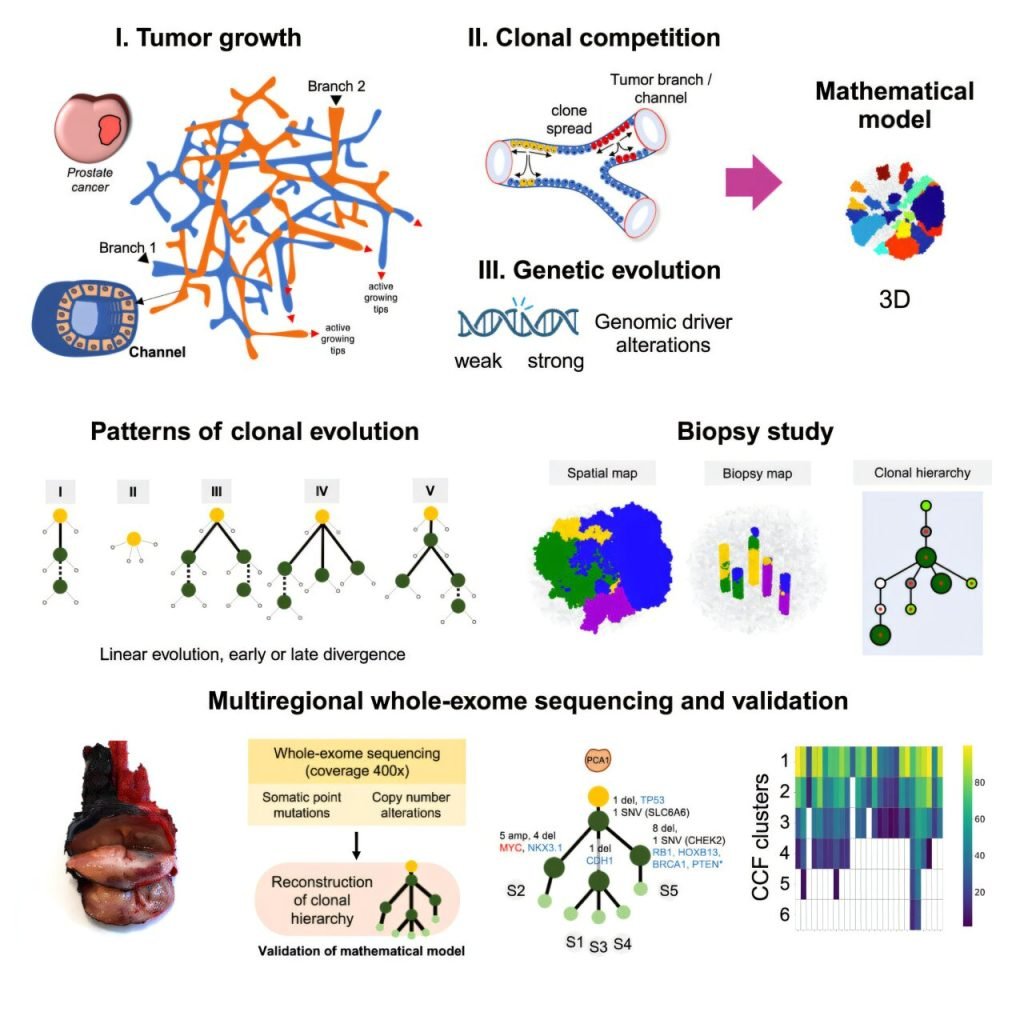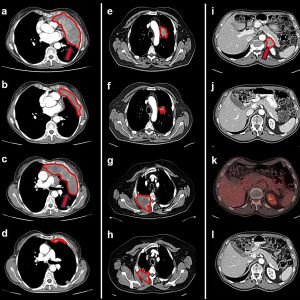
A team led by Dr. Yuri Tolkach at the University of Cologne’s Faculty of Medicine and University Hospital Cologne has investigated prostate tumors and developed an advanced, realistic, three-dimensional model of prostate cancer with the help of mathematical modeling.
The model depicts tumor growth, genetic evolution and the competition between subclones—different cell populations within a tumor. It shows, among other things, that the development of an aggressive tumor requires “strong” genetic changes that immediately give the tumor cells special survival advantages. These must occur early in the course of tumor development, when the tumor is still small.
The study also shows that the distribution of subclones within a tumor has an impact on diagnostic approaches such as biopsies. The paper, “Tumor architecture and emergence of strong genetic alterations are bottlenecks for clonal evolution in primary prostate cancer,” has been published in Cell Systems.
Prostate cancer is the most common cancer in men. However, the mechanisms of tumor development, particularly the development of aggressive tumors, are still largely unclear in prostate cancer and other malignant tumors for two reasons.
First, tumors are often only discovered when they have already reached a considerable size. The time span between the development of the tumor and the diagnosis, which can be 10 to 30 years, is therefore not taken into account.
Second, state-of-the-art methods such as next-generation sequencing (NGS), which make it possible to comprehensively characterize the tumor at subclone level, are costly and extremely complex to evaluate. For these reasons, only a few tumors worldwide have so far been examined in this way.
“Our study shows that we can use mathematical modeling to address important, previously unanswered questions about the development of malignant tumors and thus gain clinically relevant insights. Our model is universally applicable and can also be used for other malignant tumor types,” explained senior physician and co-leader of the study, Dr. Yuri Tolkach from the Institute of General Pathology and Pathological Anatomy at University Hospital Cologne.
“With our new model, we can reproduce the complex spatial structure of a prostate tumor, which grows like a root system in the tissue,” explained postdoc and co-leader of the study, Dr. Florian Kreten, who previously worked at the Institute for Applied Mathematics at the University of Bonn.
“Conventional mathematical models of tumor growth and evolution could not be applied to these structures. From a mathematical point of view, the underlying growth mechanism is extremely fascinating and has raised a number of new questions. Our work shows how biology can inspire mathematical research,” he added.
In the future, the scientists hope to be able to further develop the models and to include the interaction between the tumor and the immune system.
More information:
Florian Kreten et al, Tumor architecture and emergence of strong genetic alterations are bottlenecks for clonal evolution in primary prostate cancer, Cell Systems (2024). DOI: 10.1016/j.cels.2024.10.005
Citation:
Mathematical modeling leads to a better understanding of prostate cancer (2024, November 14)
retrieved 14 November 2024
from https://medicalxpress.com/news/2024-11-mathematical-prostate-cancer.html
This document is subject to copyright. Apart from any fair dealing for the purpose of private study or research, no
part may be reproduced without the written permission. The content is provided for information purposes only.








